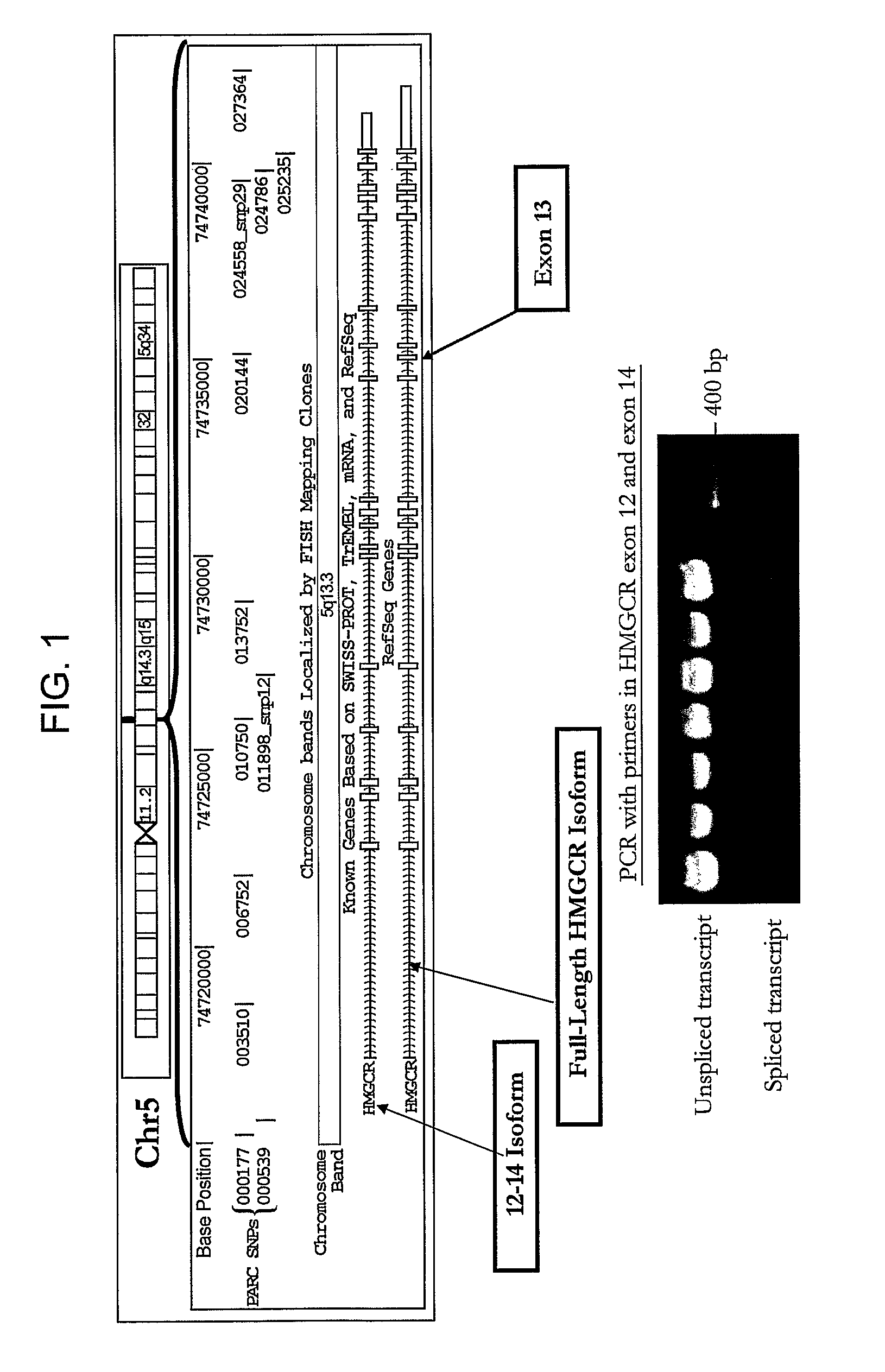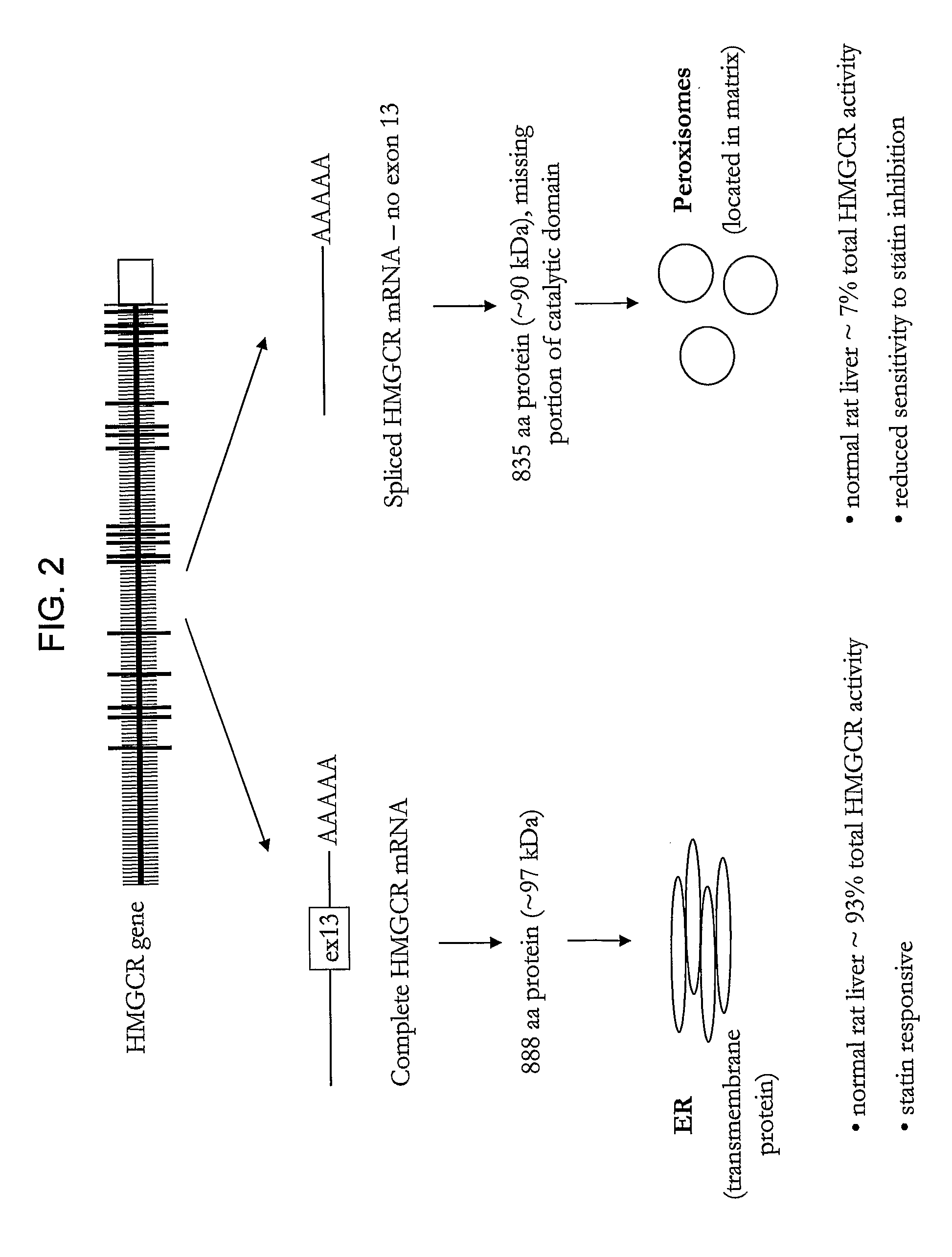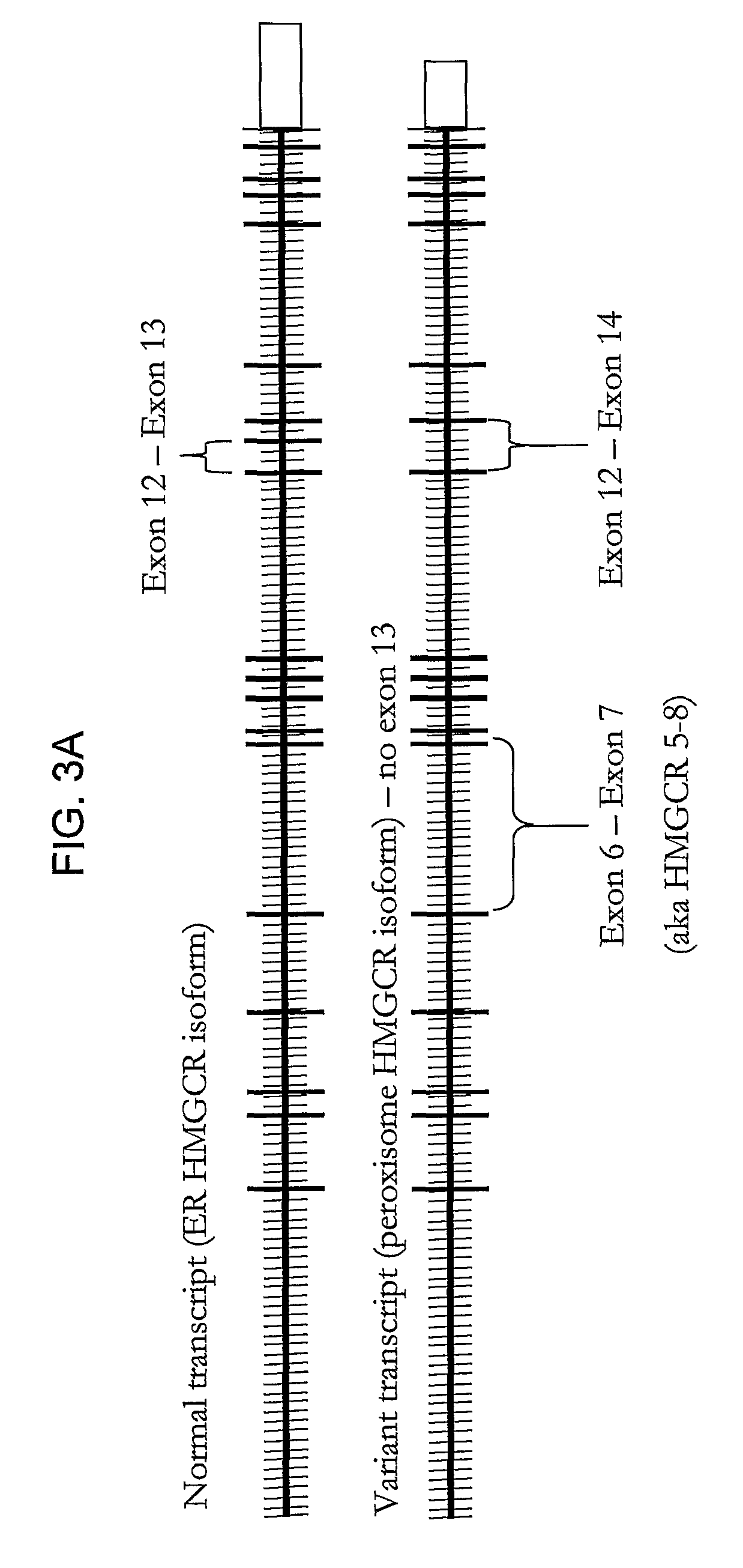HMGCR isoforms in prediction of efficacy and identification of cholesterol-modulating compounds
a cholesterol-modulating compound and isoform technology, applied in the field of assessing the sensitivity of cholesterol-modulating drugs, can solve the problems of reducing the efficacy of hmgcr inhibitor drugs (statins), lowering cholesterol levels, and reducing the recognition of ldl produced by pd patients, so as to facilitate the selection of cholesterol-lowering therapies and improve the treatment of patients. , the effect of increasing the dose of an hmgcr inhibitor
- Summary
- Abstract
- Description
- Claims
- Application Information
AI Technical Summary
Benefits of technology
Problems solved by technology
Method used
Image
Examples
example 1
HMGCR Gene Expression is Upregulated by Statin Treatment
[0309]Cells obtained from patients in Study Populations A. B and C were used in this example. There were no significant differences in population demographics or statin response between the two African American sub-populations used in this study (Study Population A and Study Population C), however smoking status, age, BMI, and absolute change in total and LDL-cholesterol differed between the African American (Study Population A and Study Population C) and Caucasian American (Study Population B) sub-populations.
[0310]HMGCR(12-13) and HMGCR(12-14) mRNA expression was assessed in lymphocyte cells (7.5×106) from individual subjects in CAP prior to and after 24 hours of exposure to either 1.8 μM or 14.5 μM activated simvastatin or control (blank solution). HMGCR(12-13) and spliced HMGCR(12-14) mRNA was quantified via real time PCR as described above. Two control genes, SLC7A5 and CLPTM1, which are unaffected by statin treatment were...
example 2
Association Between HMGCR Gene Expression (In Vitro) and Lipid Response (In Vivo)
[0312]To determine if statin-induced transcriptional regulation of HMGCR could be related to the variation in statin efficacy, the association between 1) the magnitude of statin-induced HMGCR gene expression measured in vitro in the immortalized lymphocyte cell lines, and 2) the magnitude of lipid and apoprotein response to simvastatin treatment measured in vivo in the CAP trial patients from which the cell lines were derived was investigated. As a change in induction of HMGCR(12-14) may reflect a difference in overall HMGCR gene expression, and / or splicing specifically, the ratio of the two fold-changes, HMGCR(12-14) / HMGCR(6-7) to represent the process of splicing independent of the effects on overall HMGCR gene transcription. Similarly, expression of HMGCR(12-13) is also expressed as a ratio with HMGCR(6-7).
[0313]As shown in the table below, the HMGCR(12-14) / HMGCR(6-7) ratio was significantly associat...
example 3
HMGCR Inhibitors Induce Changes in HMGCR Transcripts that Are Both Race and Dose Sensitive
[0316]The change in HDL-cholesterol is associated with the magnitude of induction of the HMGCR(12-14) and HMGCR(12-13) transcripts, but was not associated with either H12-14 / H6-7 or H12-13 / H6-7 ratios. The “magnitude of induction” is calculated as the quantity of HMGCR gene expression from statin treated cells (normalized by SLC7A and CLPTM1) divided by the quantity of HMGCR gene expression from the control cells (normalized by SLC7A and CLPTM1). Consequently, a change in the “magnitude of induction” or “fold-change” of either H12-14 or H12-13 may reflect a difference in overall HMGCR gene expression, or a difference in the amount of alternative splicing at exon 13. In contrast, the H12-14 / H6-7 ratio is calculated as the magnitude of induction of the H12-14 transcript divided by the magnitude of induction of the H6-7 transcript. Division by H6-7 acts both as a second round of normalization as w...
PUM
| Property | Measurement | Unit |
|---|---|---|
| temperature | aaaaa | aaaaa |
| temperature | aaaaa | aaaaa |
| pH | aaaaa | aaaaa |
Abstract
Description
Claims
Application Information
 Login to View More
Login to View More - R&D
- Intellectual Property
- Life Sciences
- Materials
- Tech Scout
- Unparalleled Data Quality
- Higher Quality Content
- 60% Fewer Hallucinations
Browse by: Latest US Patents, China's latest patents, Technical Efficacy Thesaurus, Application Domain, Technology Topic, Popular Technical Reports.
© 2025 PatSnap. All rights reserved.Legal|Privacy policy|Modern Slavery Act Transparency Statement|Sitemap|About US| Contact US: help@patsnap.com



